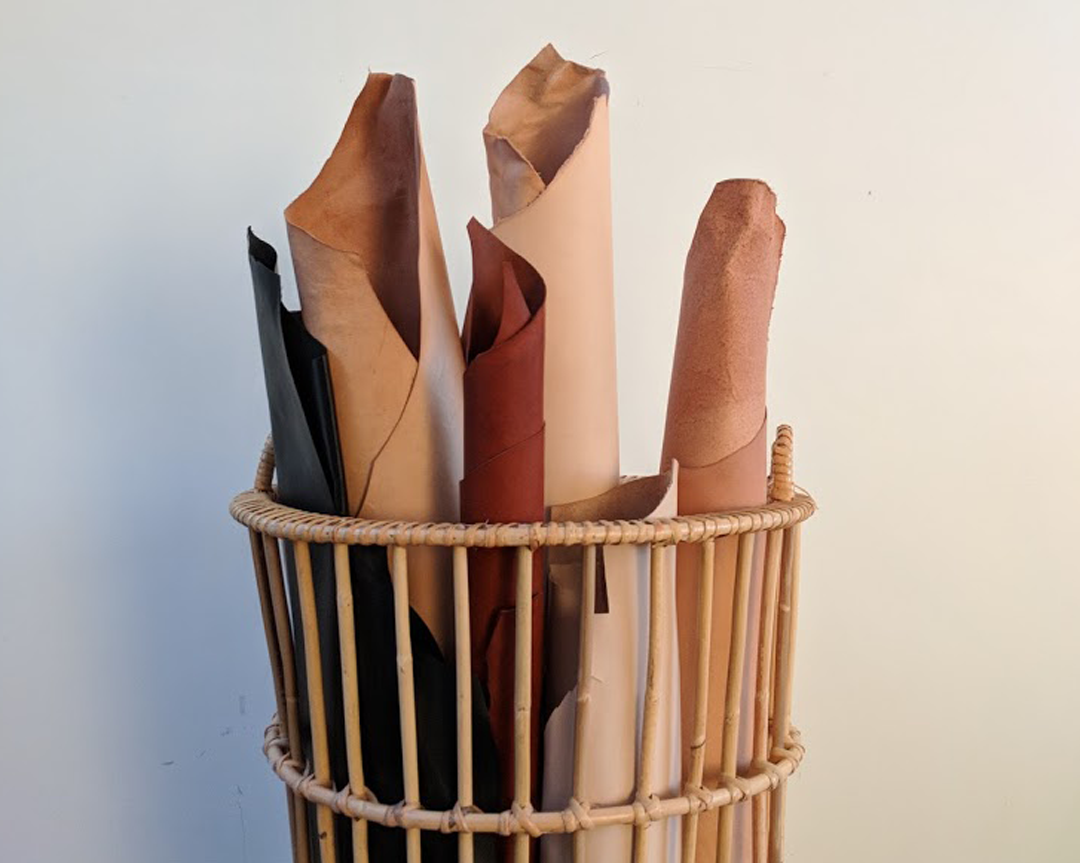why should fashion brands and consumers care about climate change?
 Artwork by Bianca Balliro
Artwork by Bianca Balliro
This week marks two notable movements, Fashion Revolution Week, and Earth Day.
Fashion Revolution Week falls on the anniversary of the Rana Plaza collapse in Bangladesh, where 1,138 garment workers were killed on the 24th April 2013. The event sparked the worldwide movement where we encourage shoppers to hold brands accountable and collectively ask “who made my clothes”.
Earth Day on the 22nd of April, is a movement where we as consumers and citizens of Planet Earth are encouraged to take meaningful actions to fight climate change.
 Christian Boltanski, Personnes, installation for Monumenta 2010 Paris Grand Palais.
Christian Boltanski, Personnes, installation for Monumenta 2010 Paris Grand Palais.
The fashion problem
Fashion Revolution Week highlights four major issues faced by today’s fashion industry.
Consumption and material composition
Both factors, that when ill-considered are vast contributors to climate change.
Fashion Revolution reports that 150 billion garments are produced annually, we buy 60% more than we did 15 years and keep them half as long, and 60% of garments are now made from polyester (a plastic fibre made from crude oil) which has doubled since 2000.
All of these statistics are leading to the degradation of our planet.
 Students protesting with Fashion Revolution.
Students protesting with Fashion Revolution.
Worker’s rights and collective action
Inaction from brands and a lack of transparency can hide acts of modern slavery within the supply chain.
Last year during Fashion Revolution Week we shared who makes our bags, so this year, we wanted to take the opportunity to talk more on fashion’s impact on climate change.
There is hope
In 2020, we are not only faced by the global climate disaster, but we’re adjusting to a new normal as we fight a worldwide pandemic. It’s a scary time, but among the doom and gloom, we are presented with an opportunity: one for reflection, contemplation and greater climate action.
Thankfully, the discussion around climate change is becoming louder, with increasing pressure being put on governments to make meaningful policy changes. Climate change has also become the impetus for many of us to reassess the choices we make when it comes to fashion and shopping. Gradually, we are becoming more informed and are seeking products that specifically align with our personal values.
With a new perspective and sudden chunk of time on our hands for self-reflection and examination, 2020 could be the most meaningful one yet for tackling climate change. Along with Fashion Revolution Week and Earth Day, the team at simétrie are encouraging you to take some time to contemplate the changes you can make in your life to limit your impact on the Earth. And importantly assess ways we can be more conscious and mindful fashion consumers.
How to shop with climate change in mind
If you’re in the position to be shopping, here are a few steps you can take to shop more environmentally friendly. Statistics suggest that if we all make more considered choices when buying fashion, we can contribute to very real climate action.
 What Are Sustainable Materials? by Julia English.
What Are Sustainable Materials? by Julia English.
Check the materials
Among Earth Day’s tips are ways to shop smarter, including embracing the circular economy, also coinciding with Fashion Revolutions’ guide to ask brands #WhatsInMyClothes - a nod to ensuring materials are long-lasting for their intended use, do not cause pollutants in their creation, and are biodegradable, recycled and/or recyclable.
For easy information on raw materials, follow Julia English, a student graduate who is making infographics to help people better understand what all the different fibers are about.
Look out for pollutants and waste of precious resources
A report by the UN’s IPCC shows the fashion industry is responsible for 10 percent of global carbon dioxide emissions annually and consumes approximately 1.5 trillion liters of water per year (which equates to 20 percent of all wastewater). This one is harder to spot on the content label, but with a little research you’ll be a savvy shopper in no time.
Look for GOTs certified or organic varieties of natural fibers like hemp, which does not need pesticides, and requires only half the water that cotton needs to grow. Synthetic materials are derived from crude oil, and are harmful to produce, so best to stay away from virgin polyester, virgin nylon, and acetate where possible.
We also quite like the materials list from A.BCH as a starting point for your research.
Buy well, buy less
In our opinion – and brand ethos – the simplest path to sustainability is not overbuying, but rather investing in well-made and timeless staples. According to the Guardian, extending the life of a garment (or handbag) by an extra nine months reduces its environmental impact by 20-30 percent. So not only should you look for long-lasting materials but ensure the manufacturer’s quality is long-lasting too.
 M Crescent Moon Bag in Red-Earth.
M Crescent Moon Bag in Red-Earth.
Here’s what simétrie is doing to tackle climate change
Our brand mission is balancing style with the impacts on our planet and our people. As a sustainable bag brand, simétrie aims to eradicate the use of plastics in our production and embrace environmentally friendly materials and manufacturing processes.
 Our vegetable tanned kangaroo leather.
Our vegetable tanned kangaroo leather.
Natural Materials
Our main material is vegetable-tanned Kangaroo leather, which provides the best answer to a long-lasting and biodegradable, thus circular material. The leather we use is not farmed but rather harvested from necessary wildlife management. As a result, no land is cleared, nor is any additional water or feed used to raise the kangaroos. Unlike cows and other animal leathers, kangaroos produce negligible levels of methane - making their leather one of the most environmentally friendly materials to work with.
Our hemp / organic cotton materials are some of the least water intensive fibers you can get, with the added bonus that they are natural and provide good durability for their intended use too.
Additionally, where any of our bags require more reinforcement to hold their unique shape, we utilise sheets of Portuguese cork – a sustainably harvested, natural material that is an environmentally friendly alternative to what is normally used in bag production, ethylene-vinyl acetate (EVA), which is derived from harmful petrochemicals.
 Portugal cork trees, Ross Helen.
Portugal cork trees, Ross Helen.
Low pollutants and water waste
The second step we take is using water-based glues and dyes which are not only safe for workers but limits dangerous runoff into waterways and soil.
Our vegetable tanned leather is sourced in Australia, which uses water for processing, but doesn’t contaminate it. There are no chemicals used in vegetable tanning and being tanned in Australia means the process adheres to the Environmental Protection Agency’s guidelines to ensure wastewater is properly managed and does not impact local water quality.
This provides an alternative that is both safe for employees the planet, and people.
 How we mixed our custom colour Red-Earth using water based dyes.
How we mixed our custom colour Red-Earth using water based dyes.
Lifetime guarantee
Lastly, all simétrie products come with a lifetime guarantee. This means you’re sure to have a piece that will stand the test of time, and not end up in landfill – enabling you to buy less overall and saving the planet’s resources to produce more bags in the future.
 Artwork by
Artwork by  Christian Boltanski, Personnes, installation for Monumenta 2010 Paris Grand Palais.
Christian Boltanski, Personnes, installation for Monumenta 2010 Paris Grand Palais. Students protesting with Fashion Revolution.
Students protesting with Fashion Revolution. What Are Sustainable Materials? by
What Are Sustainable Materials? by  M Crescent Moon Bag in Red-Earth.
M Crescent Moon Bag in Red-Earth. Our vegetable tanned kangaroo leather.
Our vegetable tanned kangaroo leather. Portugal cork trees, Ross Helen.
Portugal cork trees, Ross Helen. How we mixed our custom colour Red-Earth using water based dyes.
How we mixed our custom colour Red-Earth using water based dyes.


Comments